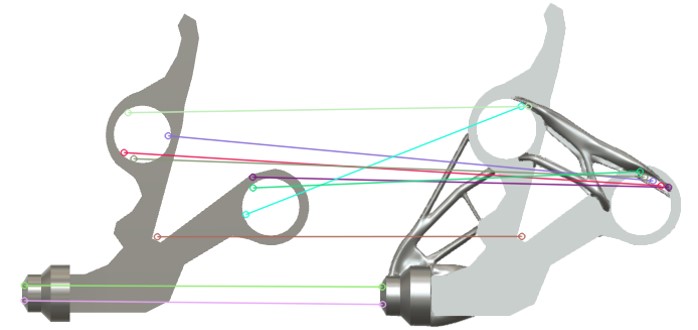Development of medical device design method considering human-centered design
Main Article Content
Abstract
According to the Ministry of Health, Labour and Welfare, accidents due to medical malpractice have occurred in Japan because of the mishandling of medical devices. The emphasis is placed primarily on the function and cost of medical devices at the design stage; however, their usability is not considered. Therefore, human-centered design (HCD) is important and needs to be employed. The main goal of HCD is to enhance the ease of product usage, to maximize user satisfaction and enhance device safety. The product usability mainly depends on the shape of the device, and thus, analyses should be performed based on the feature quantity of the shape. This study focuses on the method that digitizes the change in the shape, by extracting the shape information, in addition to deriving the design plan using the engineering design variable. In HCD, divergence and convergence of ideas is important. Therefore, the design plan is derived using the generative design for the divergence of the idea. Through this, several design plans were derived in this study, based on a plan that quantified the matching distance using image processing. Lastly, we derived the design plan and then analyzed the data on device shape, through digitization.
Article Details

This work is licensed under a Creative Commons Attribution-NonCommercial-ShareAlike 4.0 International License.
This work is licensed under a Creative Commons Attribution-NonCommercial-ShareAlike 4.0 International License.
References
MHLW. Summary of medical facility (static and dynamic conditions), Survey and Hospital Report, Japan, 2017.
Japan Council for Quality Health Care, Division of Adverse Event Prevention. Project to Collect Medical Near-miss/adverse event information, No. 56, 2018, Japan, URL: http://www.med-safe.jp/pdf/report_56.pdf
Doyle, P.A., Ayse, P.G. and Peter, J.P. Master medical devices for safe use: Policy, purchasing, and training, American Journal of Medical Quality, Vol. 32(1), 2017, pp. 100-102.
Linda, T.K., Janet, M.C. and Molla, S.D. To Err is human: Building a safer health system, 2000, The National Academies Press, Washington.
Makary, M.A. and Daniel, M. Medical error-the third leading cause of death in the US, BMJ, Vol. 353, 2016, pp. i2139.
Martin, J.L., Norris, B.J., Murphy, E. and Crowe, J.A. Medical device development: The challenge for ergonomics, Applied Ergonomics, Vol. 39(3), 2008, pp. 271-83.
U.S. Department of Health and Human Services. Applying Human Factors and Usability Engineering to Medical Devices, Guidance for Industry and Food and Drug Administration Staff, 2016, Food and Drug Administration, USA.
Andreas, H., Primoz, K., Gerold, S., Matjaz, D., Rainer, H.W. and Julia, F. Design and development of a mobile computer application to reengineer workflows in the hospital and the methodology to evaluate its effectiveness, Journal of Biomedical Informatics, Vol. 44, 2011, pp. 968-977.
FDA. Human factors considerations, USA, URL: https://www.fda.gov/medical-devices/human-factors-and-medical-devices/human-factors-considerations, accessed on 2019.
Kjeldskov, J., Skov, M.B. and Stage, J. A longitudinal study of usability in health care: does time heal?, International Journal of Medical Informatics, Vol. 79, 2010, pp. 135-143.
Clarkson, P.J., Bukle, P., Coleman, R., Stubbs, D., Ward, J., Jarrett, J., et al. Design for patient safety: A scoping to identify how the effective use of design could help to reduce medical accidents, 2004, University of Cambridge, UK.
Shah, S.G. and Robinson, I. Benefits of and barriers to involving users in medical device technology development and evaluation, International Journal of Technology Assessment in Health Care, Vol. 23, 2007, pp. 131-137.
Dain, S. Normal accidents: Human error and medical equipment design, Heart Surgery Forum, Vol. 5(3), 2002, pp. 254-257.
Thomas, J.H., Lan, R.G. and Sundar, K. A concept ideation framework for medical device design, Journal of Biomedical Informatics, Vol. 55, 2015, pp. 218-230.
Chris, J.V. and Ann, B. Designing for safety and usability user-centered techniques in medical device design practice, Human Factor and Ergonomics Society Annual Meeting Proceedings, Vol. 55(1), 2011, pp. 793-797.
Yock, P.G., Zenios, S. and Makower, J. Biodesign: The process of innovating medical technologies, 2nd edition, 2015, Cambridge University Press, Cambridge.
Gould, J.D., Lewis, C. Clayton designing for usability: Key principles and what designers think, Communications of the ACM, Vol. 28(3), 1985, pp. 300-311.
Berguer, R. Surgical technology and the ergonomics of laparoscopic instruments, Surgical Endoscopy, Vol. 12(5), 1998, pp. 458-462.
Berguer, R., Forkey, D.L. and Smith, W.D. Ergonomic problems associated with laparoscopic surgery, Surgical Endoscopy, Vol. 13(5), 1999, pp. 466-468.
Berguer, R., Gerber, S., Kilpatrick, G. and Beckley, D. Anergonomic comparison of inline vs pistol-grip handle configuration in a laparo scopic grasper, Surgical Endoscopy, Vol. 12(6), 1997, pp. 805-808.
Matern, U., Eichelaub, M., Waller, P. and RÃijckauer, K. MIS instruments: an experimental comparison of various ergonomic handles and their design, Surgical Endoscopy, Vol. 13(8), 1999, pp. 756-762.
van Veelen, M.A., Meijer, D.W., Goossens, R.H.M., Snijders, C.J. and Jakimowicz, J.J. Improved usability of a new handle design for laparoscopic dissection forceps. Surgical Endoscopy and Other Interventional Techniques, Vol. 16, 2002, pp. 201-207.
Hartung, H. and Rottenberg, S. Human-centered design: Understanding customers needs through discovery and interviewing, Academic Entrepreneurship for Medical and Health Scientics, Vol. 1(4), 2019, article 5.
Gibson, J.J. The ecological approach to visual perception, 1979, Houghton Mifflin, Boston.
Gison, J.J. The theory of affordances. In: Perceiving, Acting and Knowing: Toward an Ecological Psychology, Shaw, R. and Bransford, J. (eds.), 1986, Lawrence Erlbaum Associates Inc, Hillsdale, pp. 67-82.
Norman, D.A. The psychology of everyday things, 1988, Basic Books, New York.
Hope Denshi Co. Ltd. Japan, URL: http://www.hope-denshi.co.jp/naishikyougeka_products/, accessed on 2019.
Pablo, F.A., Jesús, N., Adrien, B. Fast explicit diffusion for accelerated features in nonlinear scale spaces, paper presented in British Machine Vision Conference, 2013, Bristol, UK.



